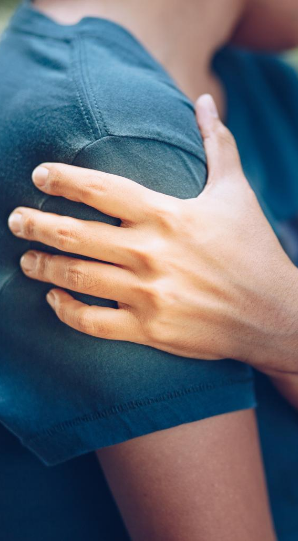What is shoulder arthroplasty?
Shoulder arthroplasty is a surgical procedure which involves removing diseased or damaged bone surfaces in the shoulder joint and replacing them with prosthetic implants. These implants are usually made from a mixture of titanium, metal alloy and plastic. Shoulder arthroplasty is usually performed to treat arthritis in the shoulder, but may also be recommended for other shoulder conditions.
There are two main types of shoulder replacement available in Australia: anatomical total shoulder arthroplasty (aTSA), and reverse total shoulder arthroplasty (rTSA).
Reverse shoulder replacement is becoming the preferred approach. Some reports indicate that they are already more common in Australia than traditional anatomical shoulder replacements. Dr Jason Ward has undergone specialised training to gain the skills necessary to perform this procedure.

How does a shoulder arthroplasty work?
A total shoulder arthroplasty involves cutting away the diseased parts of your shoulder joint’s bony surfaces, then implanting prosthetics which replace them. It aims to relieve pain by replacing the parts of your shoulder which are causing pain.
The surgery takes place in a hospital and under a general anaesthetic. Once you are asleep, Dr Ward makes an incision along the front of your shoulder and separates the muscles with retractors. He then uses other instruments to remove damaged parts of the bone and shapes the healthy sections so that they will fit with the prosthetic parts. The prosthetics are secured to your bones and tested to make sure they move correctly, then Dr Ward closes the wound with sutures and covers it with a sterile dressing.

How is a reverse shoulder replacement different to an anatomical shoulder replacement?
An anatomical shoulder replacement is so named because its shape mirrors your shoulder’s natural anatomy. A reverse shoulder replacement, on the other hand, flips the original structure around.
The shoulder is a ball and socket joint. The ball – made up of the top end of your upper arm bone – fits against your shoulder socket and allows movement. When you get an anatomical shoulder replacement, the prosthetics mimic that structure. Your shoulder socket is replaced with a socket-shaped prosthetic, and the top of your arm bone is replaced with a ball-shaped implant.
When you undergo a reverse shoulder replacement, Dr Jason Ward places specialised implants which swap the structure around. A ball-shaped piece is affixed into your shoulder socket, and a cup-shaped piece is attached to your upper arm bone. Flipping the structures means that different muscles drive the shoulder movement. This is important if the rotator cuff is not working well, as is often the case with shoulder arthritis.
This video from Mayo Clinic illustrates the difference clearly.
What risks are involved in shoulder replacement surgery?
As well as the normal risks that accompany any surgery (bleeding, infection, etc), shoulder arthroplasty carries some risks that are unique to the procedure. These are very rare and include:
- Nerve or blood vessel damage
- Pain that persists after surgery
- Inability to use your arm or hand
- The implant becoming loose
- Rotator cuff tears
- The implant becoming dislocated
- Your shoulder becoming stiff
Recovering from a shoulder arthroplasty
After a shoulder arthroplasty, you will usually wake up in the theatre recovery room. Once the anaesthetist and Dr Ward assess that you no longer need acute observation, a nurse will move your bed to the ward.
Most people stay in the hospital for 2-3 days after their total shoulder arthroplasty. Once they are certain that you are ready to leave, the medical team will discharge you with your arm in a sling and prescribed painkillers. You will need to wear the sling for up to six weeks and you will begin post-operative exercises immediately. Dr Jason Ward will instruct the Physiotherapists to help you with these exercises, starting while you are in hospital.
It is important to note that after a shoulder replacement, your shoulder will not feel quite the same as before. Most patients find that their pain reduces significantly, but you may find that it does not disappear completely or that you may not have quite as much strength in your arm as before. You can return to desk work 4-6 weeks after surgery, though it may take six or more months to return to physical work involving heavy lifting or frequent overhead movements.